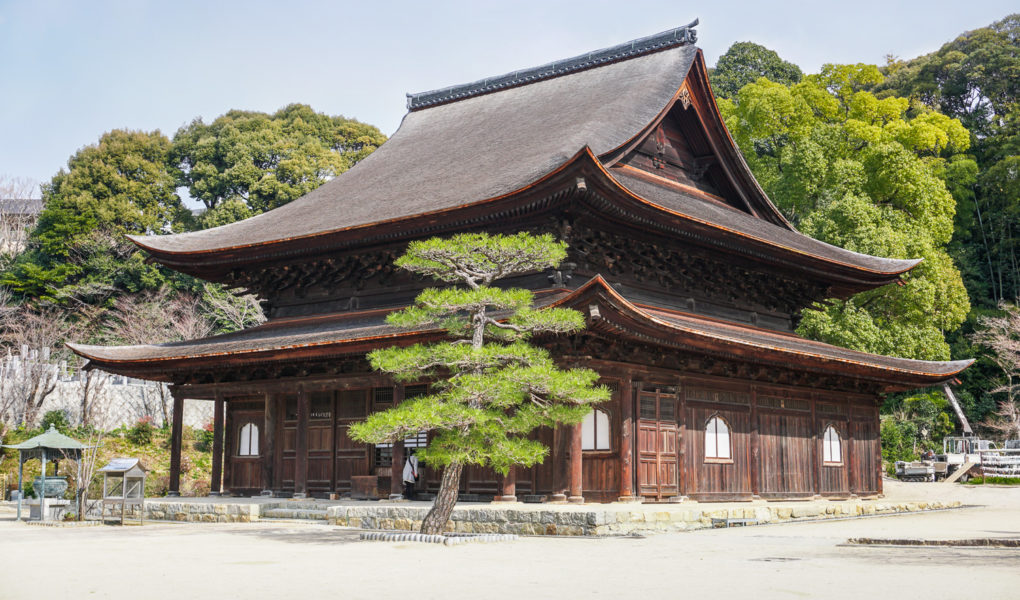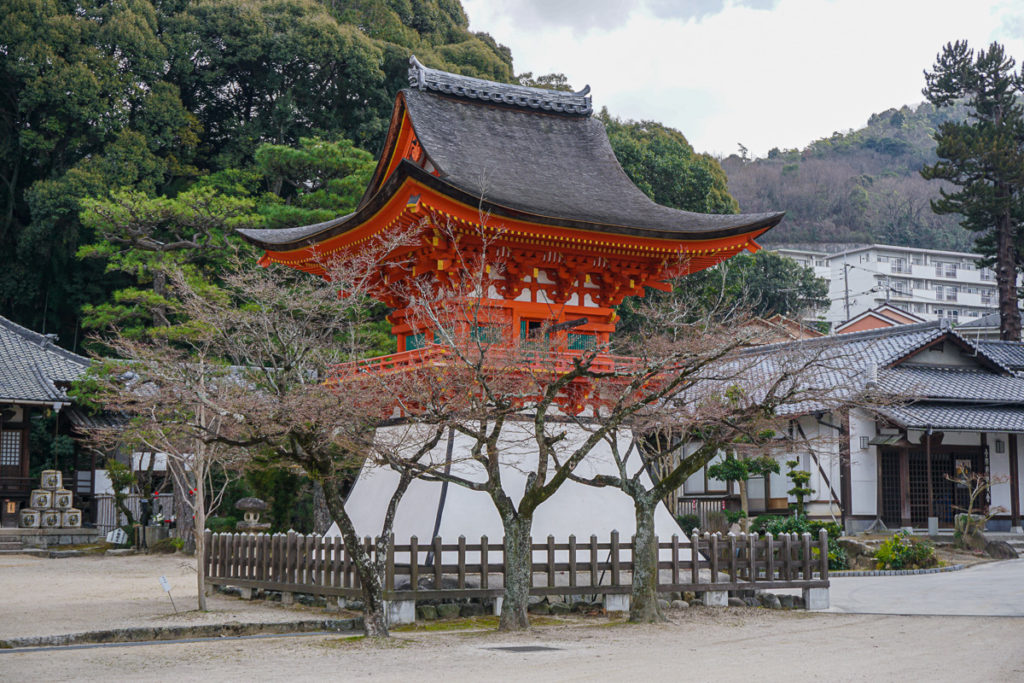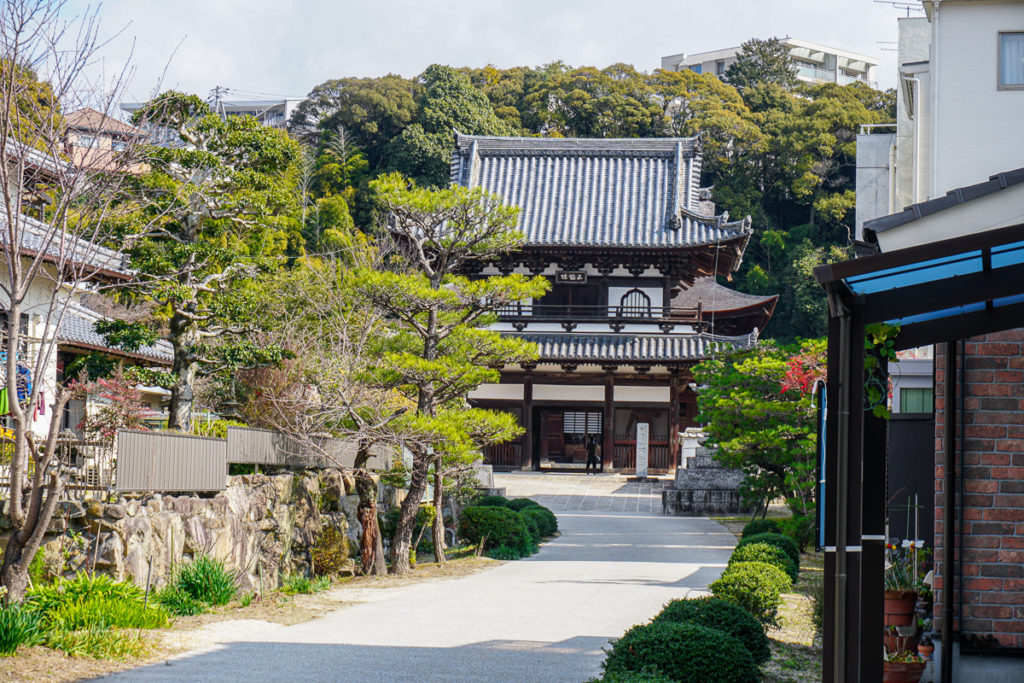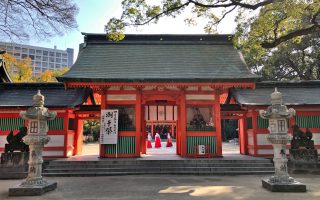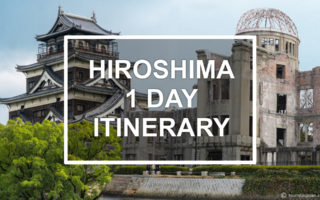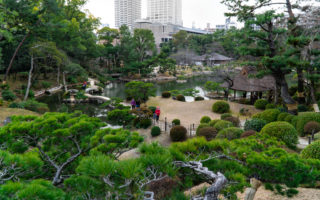Fudo-in is a Buddhist temple located in Hiroshima, on the eastern side of mount Futabayama. The temple largely survived the 1945 atomic bombing of Hiroshima, and is the only temple in Hiroshima City, which is designated as a national treasure.
Hotels Hiroshima & Miyajima Tour Japan Rail Pass
As you walk around the quiet and peaceful temple grounds at Fudo-in, you can really feel the history of the place. The Kondo (main hall) survived the atomic bomb in 1945, and stands as a solid monument and reminder of the Hiroshima which existed before 1945.
The beautiful, two-story main gate, which can still be seen today, dates back to 1594. The massive Nio Statues standing in the gate are even older, dated to 1294. It is thought that the massive pieces of timber used for the construction were brought back from Korea after an invasion in 1592. The dating and the idea of the wood coming from Korea stems from an inscription on the building which states “朝鮮木文禄三”, a text which can be broken down to mean “Korea“, “Tree” and “3rd year of the Bunroku period“.
all photos above © touristinjapan.com
As you pass through the gate you find yourself in front of the massive Kondo (main hall), which is the only building to be designated as a national treasure in all of Hiroshima city. The Kondo was first constructed in 1540. It is the largest remaining building in the Kara-yō (Chinese) architectural style. Kara-yō was one of three main styles used for temples during the Kamakura Period (1192–1333). A date written with Chinese ink indicates that the building was constructed in 1540, but it is thought that it was originally built in the area which today is Yamaguchi Prefecture. The Kondo was supposedly moved to Fudo-in decades later. Visitors usually can’t enter the building, which supposedly has ceiling paintings of celestial maidens and a dragon dating back to the time of construction.
On the right side of the main hall stands the vermilion colored bell-fry which sits on top of a white base. The tower dates back to 1433 and is a National Important Cultural Property. It’s bright colors create an interesting contrast with the very dark main hall and the green forest.
History of Hiroshima Fudo-in
The early history of Fudo-in is not entirely clear, but there are some good indicators about it’s past. It is thought that this site has served as a temple ground since the Heian period (794 – 1185). This assumption seems to mainly be based on a date inscription on a Yakushi Nyorai statue which, today is kept inside the main hall. During the 1300’s the temple located on this site was known as Ankoku-ji. Ankoku-ji temples were a group of temples dedicated to appeasing the spirits of dead samurai warriors. The Ashikaga Shogunate (1336-1573) had 60 of these temples constructed across Japan, with one temple in each of the country’s provinces. The practical use of these temples was as much a strategic and political one as a spiritual one. With a temple erected in each province, the shogun would have i direct center of control and intelligence for every area of Japan.
In the first half of the 1500’s the temple was destroyed during the battle between the Takeda and Ouchi clans. It’s is said that the temple was only rebuilt some 50 years later, and much of what is seen here today stems from the reconstruction in the late 1500’s.
The temple was converted from the Zen sect to the Shingon sect some time after 1600. In that connection the name was changed from Ankoku-ji to Fudo-in.
Getting there
By train: The Astram Line stops at Fudoin-mae station, just a few minutes from Fudo-in temple. From the central city you can catch the Astram Line at Hondōri Station (near Peace Park ) or Jōhoku Station (near Hiroshima Castle).
From Hiroshima Station: Take either the JR Kabe Line or JR Sanyo Line to Shin-Hakushima Station, where you can change to the Astram Line.

